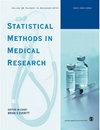群组随机交叉设计中测试治疗效果异质性的样本量和功率计算
IF 1.6
3区 医学
Q3 HEALTH CARE SCIENCES & SERVICES
引用次数: 0
摘要
与传统的平行臂分组随机设计相比,分组随机交叉设计被提出来提高效率。虽然已开发出设计分组随机交叉试验的统计方法,但这些方法只侧重于测试总体平均治疗效果,而很少关注不同亚群的不同治疗效果。最近,人们越来越关注了解治疗效果是否会因预先指定的患者亚群(如根据人口统计或临床特征定义的亚群)而有所不同。在本文中,我们考虑了在横截面或封闭队列抽样方案下的两疗程两阶段群组随机交叉设计,在这种情况下,我们有兴趣通过交互检验来检测治疗效果的异质性。假设协变量和结果都具有模式化的相关结构,我们基于线性混合模型推导出了新的样本量公式,用于检验连续结果的治疗效果异质性。我们的公式还解决了不等群组规模的问题,因此可以分析评估不等群组规模对群组随机交叉设计中交互作用检验功率的影响。我们进行了模拟以证实所提方法的准确性,并在两个真实的分组随机交叉试验中说明了这些方法的应用。本文章由计算机程序翻译,如有差异,请以英文原文为准。
Sample size and power calculation for testing treatment effect heterogeneity in cluster randomized crossover designs
The cluster randomized crossover design has been proposed to improve efficiency over the traditional parallel-arm cluster randomized design. While statistical methods have been developed for designing cluster randomized crossover trials, they have exclusively focused on testing the overall average treatment effect, with little attention to differential treatment effects across subpopulations. Recently, interest has grown in understanding whether treatment effects may vary across pre-specified patient subpopulations, such as those defined by demographic or clinical characteristics. In this article, we consider the two-treatment two-period cluster randomized crossover design under either a cross-sectional or closed-cohort sampling scheme, where it is of interest to detect the heterogeneity of treatment effect via an interaction test. Assuming a patterned correlation structure for both the covariate and the outcome, we derive new sample size formulas for testing the heterogeneity of treatment effect with continuous outcomes based on linear mixed models. Our formulas also address unequal cluster sizes and therefore allow us to analytically assess the impact of unequal cluster sizes on the power of the interaction test in cluster randomized crossover designs. We conduct simulations to confirm the accuracy of the proposed methods, and illustrate their application in two real cluster randomized crossover trials.
求助全文
通过发布文献求助,成功后即可免费获取论文全文。
去求助
来源期刊

Statistical Methods in Medical Research
医学-数学与计算生物学
CiteScore
4.10
自引率
4.30%
发文量
127
审稿时长
>12 weeks
期刊介绍:
Statistical Methods in Medical Research is a peer reviewed scholarly journal and is the leading vehicle for articles in all the main areas of medical statistics and an essential reference for all medical statisticians. This unique journal is devoted solely to statistics and medicine and aims to keep professionals abreast of the many powerful statistical techniques now available to the medical profession. This journal is a member of the Committee on Publication Ethics (COPE)
 求助内容:
求助内容: 应助结果提醒方式:
应助结果提醒方式:


